Ready to help treat your pet to a healthy life?
What is a Cavapoo? A Guide to the Popular Poodle Mix
By : CJ Silvasi & Trupanion Staff | Published Apr 17, 2025
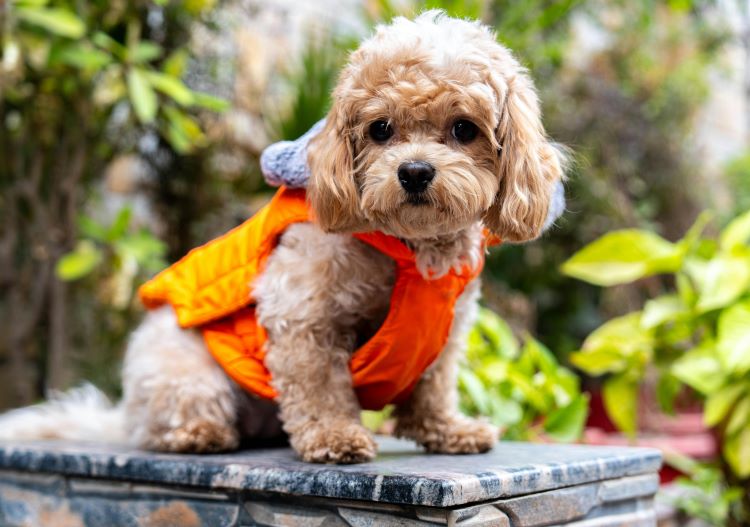
Allergy-sensitive small-dog lovers rejoice! The Cavapoo, an adorable combination of a Cavalier King Charles Spaniel and either a Toy or Miniature Poodle, is one affectionate (and downright adorable) small dog. These playful canines have grown in prominence for their intelligence and trainability, and with the right socialization, they tend to love being around people and other dogs.
Though no dog (including Poodle crossbreeds) is truly allergen-free, their low-shed coats make them a popular choice for allergy-sensitive households. Beyond their cute appearance, Cavapoos are highly adaptable and thrive in a variety of living situations, from bustling city apartments to spacious rural areas.
As the demand for these little companions grows, understanding their unique characteristics, care requirements, and temperament becomes essential for anyone considering adding one to their family. Learn all about them in this Cavapoo breed guide!
10 fun facts about the Cavapoo
- Cavapoos are often called “teddy bear dogs” because their round eyes, floppy ears, and often curly hair make them look like the popular stuffed animals.
- Perfect for families, the patient temperament of the Cavapoo makes them great companions for children.
- Are Cavapoos hypoallergenic? Technically, no dog is. However, one survey of 72 Cavapoo owners with allergies found that most reported no symptoms with their pet.
- Their Cavalier King Charles side tends to make them very affectionate and they bond intensely with their family.
- Though often thought of as brown, curly-coated dogs, the Cavapoo’s coat actually comes in many colors and textures.
- Their small size of 7-25 pounds (1.6 to 11 kg) and easy-going nature make them great for apartment living.
- They’re petite! Cavapoos usually don’t grow far beyond 9 inches to 16 inches (23 cm to 41 cm) in height at the shoulder, and they’re often said to maintain their “puppy” appearance long into adulthood.
- In other parts of the world, like Australia, Cavapoos are more commonly called Cavoodles.
- Both Poodles and Cavalier King Charles Spaniels have long life spans, so Cavapoos can live 12-15 years.
- Cavapoos can suffer from separation anxiety, so work with them early to avoid destructive behavior.
Are Cavapoos a real dog breed?
Cavapoos are considered “designer dogs” or a hybrid dog breed, meaning they are an intentional mix of two pure-breed dogs with the hopes of developing specific characteristics from each.
As noted earlier, the Cavapoo's parent breeds are the Miniature Poodle:
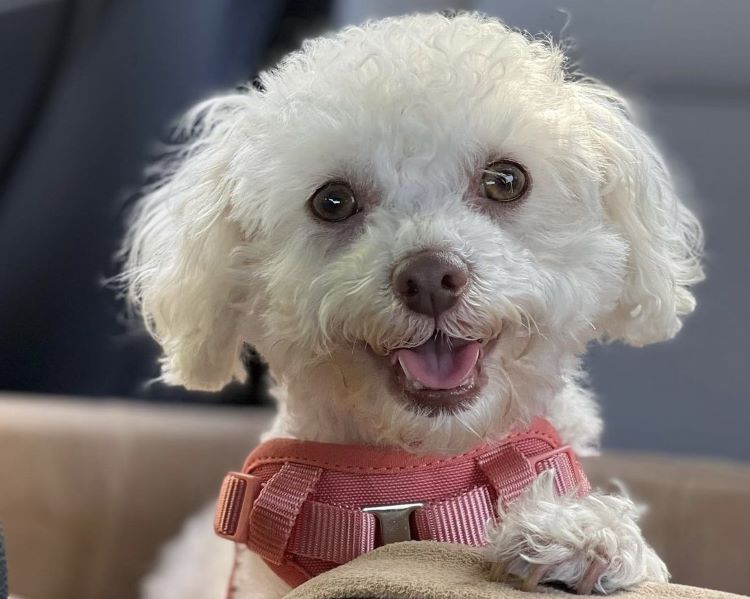
And the Cavalier King Charles Spaniel:
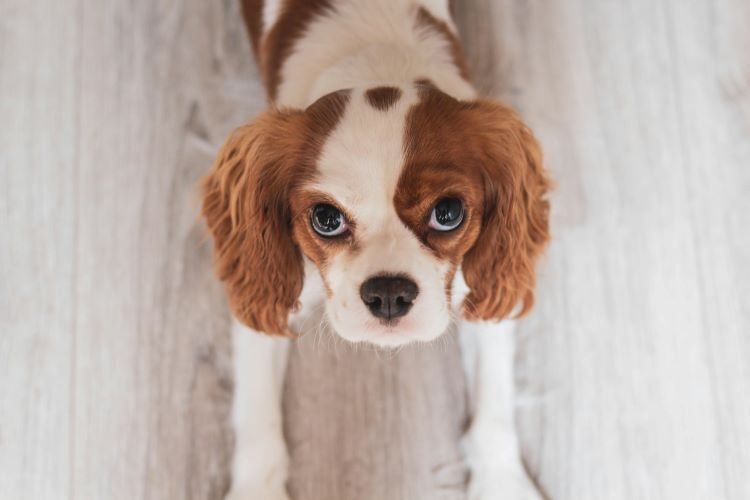
Because of this, there is no true purebred Cavapoo, and they are not recognized as a formal breed by the world’s purebred-focused kennel clubs like the AKC or CKC. You can nevertheless register your Cavapoo with alternative canine registries like the Designer Kennel Club and American Doodle Registry.
That said, many present-day established dog breeds began as mixes themselves. It’s possible that after many generations, the Cavapoo will become established (no intentional mixing of a Cavalier and Poodle needed) and recognized as its own formal breed.
There may be some evidence of things going this way already. While we typically talk about these dogs as being a mix of a Cavalier King Charles and a small Poodle, the truth is that they can result from a few different pairings:
- A first cross from a Cavalier and a Poodle
- A cross of two Cavapoos
- A Cavapoo and a Cavalier
- A Cavapoo and a Poodle
Breed history
Though it’s commonly said that the Cavapoo or “Cavoodle” comes from Australia, the reality is that the origins of the Cavapoo are not definitively known. It is suspected that the breed was developed accidentally, as has been the case for many other dog breeds that started as mixes.
Early records show that these dogs likely first emerged in the United States in the 1950’s, though they were probably called by a variety of other names. It wasn’t actually until the 1990’s that they became popular in other countries like Australia — where they were quickly and prominently developed — and the United Kingdom.
The Cavapoo’s parent breeds meanwhile have their own more established histories. Poodles are believed to have originated in Germany and date back to at least the 1400s, though the Toy and Miniature Poodle were not developed until a few centuries later. The Cavalier was meanwhile developed more recently in 1920s England, the result of lingering spaniel fandom from the Victorian era.
Similar dog breeds
In addition to sharing close characteristics with their Cavalier King Charles and Poodle parents, Cavapoos tend to have a lot of similarities with other doodle breeds:
- Maltipoo
- Cockapoo
- Goldendoodle
- Labradoodle
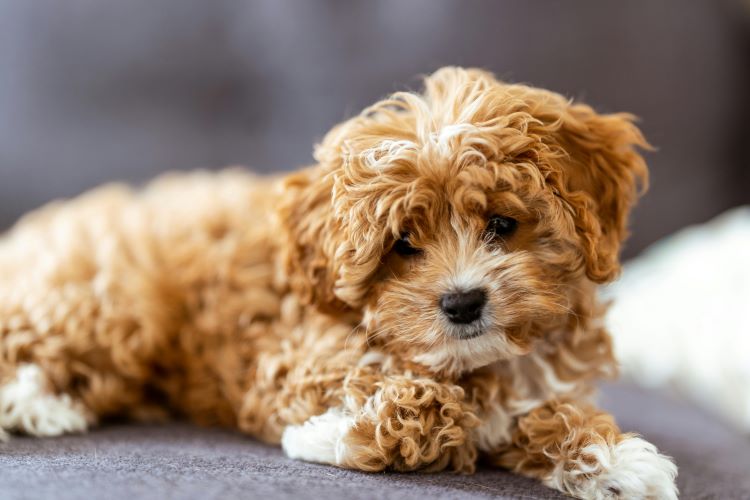
Cavapoo behavior and training
The Cavapoo temperament can vary depending on which genes dominate. That said, most display a balance of the gentle, affectionate nature of the Cavalier and the sharp intelligence of the Poodle.
Like all dogs, their behavior is also influenced by their environment, learning experiences, and individual personality. Both parent breeds are known for being eager to please, making Cavapoos relatively easy to train with consistent, positive reinforcement. However, their Poodle lineage can introduce a playful stubbornness, while the Cavalier’s innate sensitivity means they respond best to gentle guidance. With early socialization and clear boundaries, Cavapoos can thrive as loyal, well-mannered companions.
Do Cavapoos get along with other animals and humans?
The Cavalier King Charles Spaniel is known for its warm and friendly demeanor, while Poodles can be slightly more reserved around unfamiliar people and animals. This means Cavapoos often land somewhere in the middle — friendly and affectionate but occasionally cautious in new situations. Positive exposure to different environments, people, and animals during puppyhood helps them develop confidence and reduces the likelihood of fear-based reactions later in life.
Cavapoos have a medium energy level as adults though they are more energetic as puppies, which can make them a great fit for families with children. However, because of their small size, interactions with children must be supervised to avoid potential injury to the dog.
Cavapoos can get along well with other pets, including cats, especially if they are introduced properly during their formative weeks. However, like many small dogs, they may not realize their size and can become overly enthusiastic in play, making it important to monitor interactions with larger dogs.
Cavapoo exercise requirements
New Cavapoo owners may be surprised at how much energy these small pups have, especially in puppyhood. Regular physical activity like daily walks and playtime will help them grow and remain happy and healthy. Interactive play is good for their socialization needs as well as exercise, so grab their favorite toy and have a good, old-fashioned game of tug or fetch on a regular basis.
Like most small breeds, Cavapoos run the risk of injuries, especially to their joints and legs, if play gets too rough. Giving them safe areas to play where they won’t jump from heights is important. When in doubt, speak to your vet directly about any concerns you may have about your Cavapoo’s exercise needs and ask for some tips on how to make play time safe.
Mental enrichment
Poodles are known for being highly intelligent. It’s one of the many reasons they are so popular, and this trait fortunately follows into most Cavapoos. Their intelligence makes them easily trainable, but take caution as it can also lead to mischief without proper training and stimulation.
Keep your Cavapoo engaged with interactive enrichment games and training sessions early and often. It’s the perfect way to not only bond with your Cavapoo, but also prevent them from getting bored and potentially causing destructive boredom behaviors.
Common behavioral issue
Cavapoos are family-oriented, but this also means they may struggle with being left on their own. You can help reduce this stress and anxiety (as well as the potentially destructive behavior that comes with it) by gradually desensitizing them to time alone. Crate training and providing interactive toys during alone time can create a safe and positive environment. That said, be sure to avoid leaving your pup alone with any small or easily ripped-up toys, as these could easily become choking hazards.
Small dogs are notorious barkers, and Cavapoos are no different. Though not an inherently vocal breed, some can develop the habit of excessive barking. Cavapoos may begin barking as an alert, from boredom, for attention, or due to the aforementioned separation anxiety. Knowing the reasons behind the excessive barking will help train the behavior away.
As with other dogs, structured, regular training early on is important to developing a happy Cavapoo. They will respond best to positive reinforcement, but each dog may have some unique needs based on their personality. It’s important to pay close attention to how your dog responds to early training, making adjustments along the way as needed. If you’re struggling, consider signing up for puppy classes or enlisting the help of an experienced dog trainer.
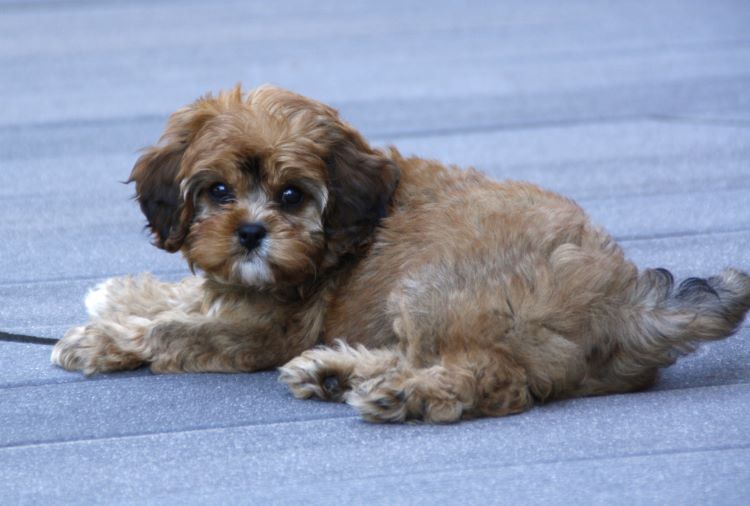
Health concerns and care tips
Despite the common belief that designer dogs have fewer health issues than their pure-bred parents, recent studies contradict that. It has been found that mixed breeds can inherit the same genetic issues that affect purebred dogs.
While knowing what kinds of risks your Cavapoo faces is a great start, regular veterinary involvement with your dog from puppyhood is an important part of your Cavapoo’s health. You’ll also want to consider enrolling your dog in pet insurance early on to help protect them against surprises and increase their likelihood of living a long, healthy life.
Common health concerns for Cavapoos
The Cavapoo can inherit genetic health issues from their parents such as:
- Hip dysplasia — A genetic disorder where the ball and socket joints do not align properly. This can be painful and cause lameness.
- Epilepsy — A neurological disorder that causes seizures.
- Cataracts — Complications in the eyes that develop in older dogs and can lead to blindness.
- Luxating patellas — also called the “floating kneecap” is a disease where the kneecap doesn’t align properly.
- Progressive retinal atrophy (PRA) — An eye condition that can lead to blindness.
- Mitral valve disease — A heart condition that impacts blood flow within the heart.
Cavapoo grooming requirements
As established, Cavapoos have allergy-friendly coats due to being low-shed. But just because they’re not shedding fur left and right does not mean that they’re maintenance-free. It’s still important to adhere to routine grooming practices and ensure your dog’s coat stays clean and comfortable.
That said, what you do will depend on the type of coat your Cavapoo has. Unlike many other types of dogs, Cavapoos come in a variety of coat types. The most common is a curly, silky coat that doesn’t shed often, but it can also be wavy or straight depending on which parent’s genetics display. While they do not require intense grooming, daily brushing with a slicker or pin brush will help prevent tangles and matting.
Cavapoos in pop culture
Cavapoos became popular in Australia when celebrities began adopting them, and that is still true to this day. Here are some celebrity owners of the breed:
- Angela Griffin (Actress & TV Presenter)
- Pete Davidson (Actor)
- Sylvester Stallone (Actor)
- Roxy Horner (Model)
Cavapoos aren’t just popular with celebrities! Former Australian Prime Minister Julia Gillard and the Swedish Royal Family are known pet parents to Cavapoos.
Like learning all about the Cavapoo/Cavoodle? Learn more about other fascinating canines in our dog breed guide.
